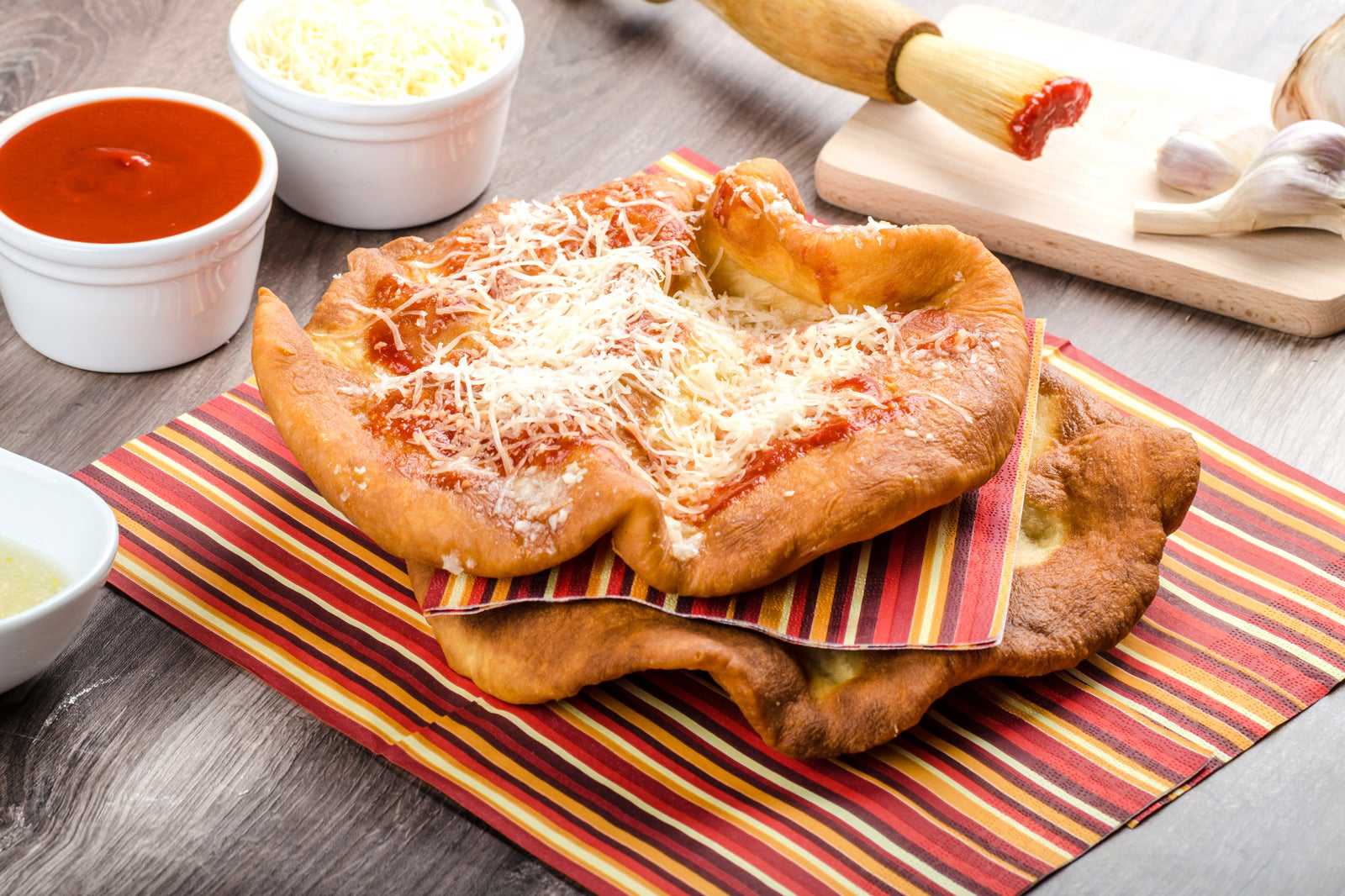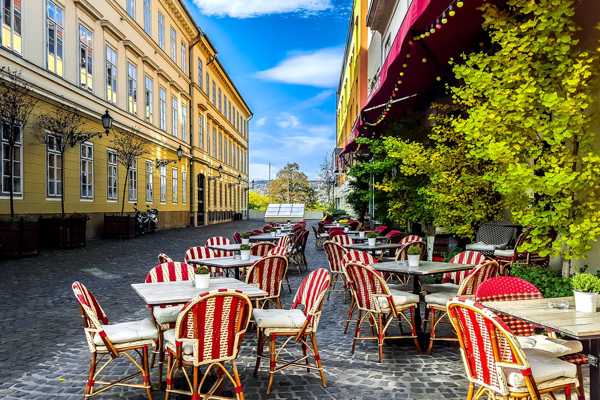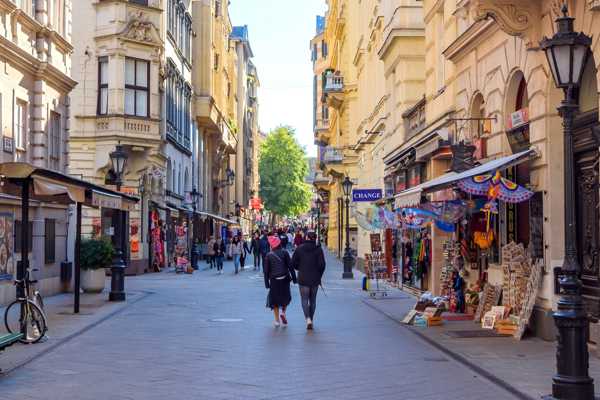The best local dishes from Budapest include those that have origins in peasant food that came from the Hungarian plains centuries ago. The hearty fare which sustained those who made a living rearing animals comforts modern-day urbanites and gets them through the city’s chilly winters.
Over the years, the cuisine has also been influenced by those who conquered and stayed. The Ottomans introduced paprika, a staple of so many dishes, while the taste for cakes and pastries is a nod to the influence of the Austro-Hungarian empire. Here are some of the most famous food you should try when visiting the Hungarian capital.
- 1
Lángos
Budapest’s tastiest street food snack

- Food
Lángos (deep-fried dough) is one of Budapest’s most popular street foods. The basic ingredients are flour, yeast, water and salt, which form a bubbly dough when combined.
This is fried in oil and served with a variety of toppings. The simplest, and arguably the most authentic, is cheese and sour cream to which garlic sauce might be added. Alternatives include sausage, onion, ham or goat cheese, or a combination of several ingredients. You might also find sweet lángos spread with jam or Nutella.
- 2
Gulyás
Hungary’s national dish

- Food
Gulyás, known to English speakers as goulash, is a spicy meat stew containing lots of paprika pepper. Originally, it was eaten by the country’s cattle herders and stockmen. They’d fry up some pork fat and onions over a campfire in a cast iron cooking pot known as a bogrács and throw in some chopped beef.
Later, someone had the bright idea of adding some paprika and the dish we know today was born. Sometimes pork is used to substitute for beef, but it’s delicious either way.
- 3
Rakott krumpli
Tasty comfort food made from layered potatoes

- Food
Rakott krumpli is a dish of layered potatoes, baked with sour cream and hard-boiled egg. It can also be served with kolbász (Hungarian sausage). The name literally translates to ‘pleated potatoes’.
The origins of rakott krumpli can be traced back to István Czifray’s cookbook, which was published in 1840. It is most likely to have been the first time this recipe appeared in print. The dish can be eaten on its own, perhaps accompanied by pickles, or served in smaller portions as a side dish.
- 4
Töltött káposzta
A flavoursome filling elevates these neat cabbage parcels

- Food
Töltött káposzta is traditional Hungarian stuffed cabbage. Leaves are taken from the head of a cabbage and used to wrap a filling made from seasoned minced pork, chopped onion, rice, and egg.
These little parcels are laid over a bed of sauerkraut, packed out with slices of smoked bacon. More sauerkraut is spooned over the top, before the whole thing is topped with a layer of cabbage. It's covered with water, brought to a boil, and simmered until the cabbage and filling are cooked right through.
- 5
Lecsó
Classic Hungarian comfort food

- Food
Lecsó is a thick vegetable or tomato-heavy ragout. It's a great comfort food to get you through Budapest’s cold winters. This colourful dish consists of tomatoes, sweet peppers, onions and paprika.
The peppers and onions are first sautéed in some pork fat, before tomatoes are added to the dish. You can enjoy it with served with rice or as stuffing for pancakes. It’s also common to pair it with lecsókolbász, a type of spicy smoked sausage.
- 6
Húsleves
A simple but delicious meat broth

- Food
Húsleves is a traditional Hungarian meat broth that you can find at many local Budapest restaurants. The secret to making an authentic húsleves is to take your time. Cooking the soup slowly helps the flavours from the vegetables and bones time to develop.
Though it’s fine on its own, noodles like vermicelli can be added to bulk it up. You can add a dash of paprika sauce to give it some heat. Don’t confuse it with the similarly named halászlé (fisherman’s soup), which is made with freshwater fish.
- 7
Főzelék
A simple vegetarian stew that’s full of flavour

- Food
Főzelék is one of Budapest’s most filling vegetarian dishes. It falls somewhere between a soup and a stew. Its name simply translates to “something that’s cooked”, so the dish is sometimes prefixed by the main ingredient.
Commonly used vegetables include bell peppers, tomatoes, cabbage, squash, beans, peas and carrots. Dill, caraway seeds, paprika, bay leaves and garlic can be added to boost the flavour. If you like meat, smoked sausage or meatballs can further enhance főzelék.
- 8
Pörkölt
Goulash-like meat stew

- Food
Pörkölt is a Hungarian-style meat and onion stew. In many ways, it is similar to goulash, except it doesn’t have as much gravy. To make it, fry onions in lard or oil. Separately, fry the chunks of pork or beef in paprika. Combine everything in a pan and add just enough water to simmer it.
It’s often served with potatoes or pasta. In Budapest, you can try pörkölt in Hungarian restaurants such as Gettó Gulyás, located in the city’s Jewish Quarter.
- 9
Paprikás csirke
Hungary’s signature chicken stew

- Food
Paprikás csirke (chicken paprikash) is a delicious stew that doesn’t skimp on Hungary’s favourite ingredient: paprika. To make this dish, start with a roux, to which the paprika is added. This becomes the base for the stew. Chicken is then added and cooked slowly until tender.
After goulash, paprikás csirke is probably the country’s 2nd national dish, though its popularity extends beyond Hungary’s borders. It's even earned a mention in Bram Stoker’s Dracula. Jonathan Harker ate this dish when he arrived at Cluj-Napoca in neighbouring Romania.
- 10
Kürtőskalács
Hungary’s favourite sweet treat

- Food
Kürtőskalács is known as ‘chimney cake’, which makes a lot of sense when you see it. A sweet yeast dough is rolled out and wound around a cylindrical spit. This is coated with melted butter, and rolled in a mix of cinnamon and icing sugar. Vendors carefully slide the pastry off, and that truncated stovepipe shape is apparent.
Kürtőskalács is often sold at markets and roadside kiosks – Budapest’s 19th-century Central Market Hall is a good place to try this sweet treat.



















